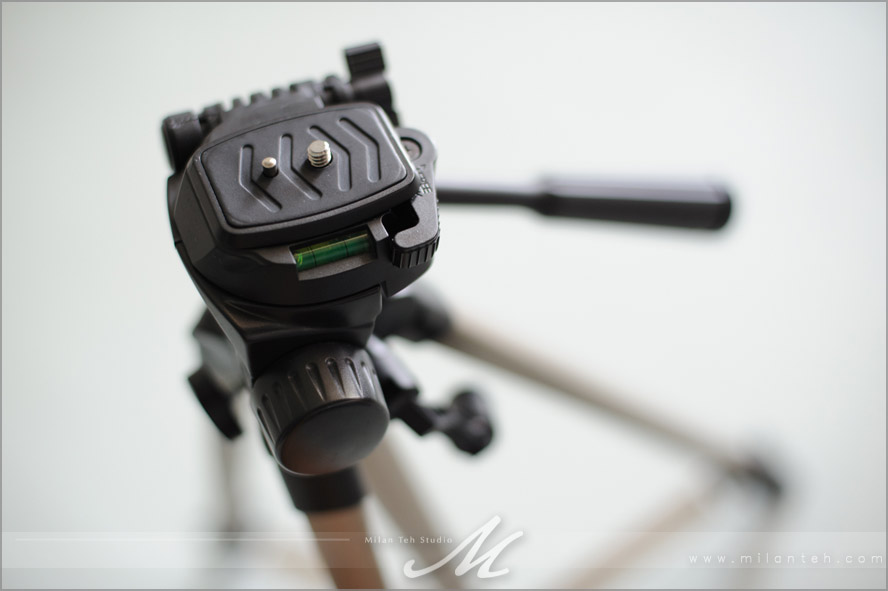Lately, there's a sudden rush of interests learning how to photograph milky way among people who I know. Of course, this is where the influence came from for me too as I were also shooting a bit of it. Milky Way is one beautiful view in this universe and I'm very grateful being able to have some pictures of it from my own home country apart from only admiring work from photographers abroad. Shot above taken from Sungai Burong, Penang, Malaysia.
Before sharing, I'd like to clarify that this is NOT a professional tutelage on astrophotography, it's what I learnt through hands-on experience, what worked for me shooting from Malaysia and informal sharing about astronomy from casual friends. Information here might not be 100% accurate but I will try my best to provide the closest correct answers or objective suggestions I could get in layman's term ensuring you'll get your milky way shots for casual keepsake. Feel free to drop your inputs if you found something that could be improved at the bottom's comment area.
What is milky way
Assume that this is our milky way. Below is a top view of where we are inside - one nano dot amongst billions of stars and planets. The so called 'milky way' we are able to photograph is actually the view of the center of it. This middle part has the most Messier Objects located forming the 'distinguishable look' that appears in photograph as it's the brighter area compared to the side of it. Roughly speaking from what I learnt,we are not be able to get a view of the 'milky way'(the middle part) around the last quarter of every year resulting from the revolution of earth. The view would be obstructed by the sun. (image below grabbed from Wikipedia)
What equipment is needed to photograph milky way
I noticed there were some confusion among fellow shooters on how to photograph milky way and some thought it's a view only being able to be seen elsewhere out of Malaysia or requires to have a Nat Geo shooters' gear. As long as you've got any camera with manual controls, that could reach ISO 800 or above and exposes 15-30 seconds, lenses of f/4 or larger(f/2.8, 1.4 etc), and a tripod would be just enough for the shot. I'm not a professional in landscape photography so I only have the free el-cheapo plastic tripod I got several years back purchasing my DSLR. It's good to have some serious tripods of heavier weight especially when you need to shoot vertically but just to let you know plastic ones worked too.
How to find milky way in Malaysia
The middle part of milky way that we photograph shifts it's position around the Scorpius & Sagittarius constellation(it's where the most Messier Objects gathers) throughout the year which is approximately the South-East direction. Therefore looking at a star chart locating these constellation will ensure you got them precisely. I have to admit that I'm 'illiterate' for star chart. Under sky-full of stars, I find it real hard to identify which is which. So, the lazy boy found an easy way out.
If you are using Android phones, get Google Sky Map, it'll turn you to a romantic romeo instantly and it's free too. For Apple iOS users, my favorite is the very beautiful Star Chart. What's awesome about apps like this is that you can have them to simulate where are the stars located at one particular date and time for example with the Time Travel function in Google Sky Map. Using them is as simple as pointing the phone to the sky, you get their names. I tried once at a remote island without phone signal, it still works, so I assume it'll work provided the phone has built-in GPS. If you are using other smartphones, maybe you can check to see if there's any app with similar function of a star chart or milky way finder.
The recent solar eclipse in May 2012. No luck to see this from Malaysia as it's only viewable from California to Taiwan.
When is a good time to photograph milky way
Say, from near January till August, the 'milky way' rises above horizon earlier and earlier day by day until it finally rises during day time where we will no longer be able to photograph from earth as mentioned earlier (somewhere around August till December period). Referring to the Google Sky Map, I found that the rising time of the Scorpius constellation gets earlier which is about 9.30pm Malaysia time recently while in April, it'll only get up on the sky 11pm onwards.
Update*:
- As of 10th September 2012 through Google Sky Map, the milky way(center part) started to rise at 4pm already at Malaysia. This proven that it rises earlier and earlier months by months till the extent that we aren't able to photograph it as it's up the sky during day time and already set by night time.
- It's 21st December 2012, end of the world...is not here. Through Google Sky Map, the milky way rises around 9am while sets on 6pm Malaysia time.
Things to avoid
Cloud, hazy sky, light pollution and moon.
Light pollution means artificial lighting created by human such as from lamp posts, building lights, commercial signages etc. You will see with your bare eye already and moon light could be one interference too. As these elements brighten the sky, if happens that milky way is appearing from that direction, you will have hard time getting a good shot. The ideal venue to shoot is somewhere you need a flash light to illuminate your walking path, somewhere you see no light at all from the surrounding.
The shot below is just to show an example of light polluted scene, notice the bright center. Cloud and hazy sky will deter you from seeing the stars as well. If you don't see a crystal-crisp-clear star with your eye above the sky, maybe it's good to make it another day cause you won't get a good shot of milky way either. In some countries where there are literally no light pollution, you would be able to photograph the whole long stretch of milky way from one end of horizon to the other end but this would require some panoramic stitching using multiple shots cause a 14mm lens on full frame camera might not be able to get the 'whole long stretch' in one shot but this is largely dependent on the position of it relatively from where & when you are shooting - it looks like a gigantic rainbow of stars!
Camera settings & focus to photograph milky way
These settings could be a good starting point for your test shot - ISO 800, f/2.8, 30" | ISO 1600, f/2.8, 15" | ISO 1600, f/4, 30". Play around with the settings until achieving your desired brightness but bear in mind that if you plan to print big, 15" is good, although the star movement is tiny, shooting with longer exposure might get the stars' movement into the shot. Of course, unless if you have no other choice due to the constrain of ISO or aperture settings. My personal preferred white balance is 3000-Kelvin or Tungsten white balance.
Focus at infinity but note that getting a "sharp infinity" image differs from each lens. From my experience, I can simply turn the focus ring to infinity if I shoot with prime lens. However when shooting with a zoom lens, things are a bit different. You can try focusing at somewhere really far like the horizon of the sea during day time to see what the indicator shows you - it differs for each focal length too, then take note on the mark. My first experience with milky way came with a lot blur looking/out of focus shot with my 16-35mm as I naively thought that putting it at infinity does the job and the little LCD looks "okay". Remember switching to manual focus when you wanted to shoot milky way, I tried focusing with autofocus pointing at stars but it's literally mission impossible for the camera (I wonder whether a Nikon D4 could).
Shooting milky way at very dark place will cause you to have a perception that your shot is bright enough through the LCD but you might want to take account that usually when you look at the back of your camera, it's under somewhere well lit like in a house or restaurant. Try shoot brighter to compensate for the false perception and shoot on RAW, reducing exposure if necessary afterwards won't introduce as much noise compared to the other way round.
How it looks like
The shot below shows approximately how it looks like to our eyes. This is taken from Tip of Borneo, Sabah. There's no light pollution from this place when I shot and the moon set already. Without presence of light, I could see some gray color 'clouds-look-alike' thingy.
With the help of DSLR, this is what it really is. Shot with a Nikon D700 at 16mm, ISO5000, f/4, 25". It's nice to have a good foreground shot together with the milky way. Shooting a plain milky way doesn't bring more meaning compared to including something unique from your country don't you think so?
Conclusion
Where you shoot might have a lot of mosquitoes, might be really dark, you could shoot until the next morning 4am and it could be dangerous with expensive cameras you have. So, share this post with your friends on how to do it and go together with mosquito repellents, flash light, and in a group. It could take you hours to wait for a perfect shot or composition for the milky way to shift to where you needed. I waited from 11pm till 3am for the shot above.
&.b.t.w. - All photos above were shot in Malaysia - Penang, Kelantan, and Sabah. The milky way is all the time around us but I personally find it challenging to shoot at island cause there's always a lot of clouds.
&.&.b.t.w. - I got addicted to shooting this and my dream is to shoot milky way in every country I get to visit!
&.&.&.b.t.w. - Share the love. Help spread this blog post to your friends or whom that's interested to shoot this via Facebook and then share your outcome with me at the comment area. It's impossible for me to shoot this everywhere so I decided to share what I know in hoping to help fellow shooters seeing the beautiful milky way from different parts of earth especially Malaysia. I look forward to see the outcome you'll get.
&.&.&.&.b.t.w. - Crazy about the beauty of milky way? I'm sure you'll love this movie.
















